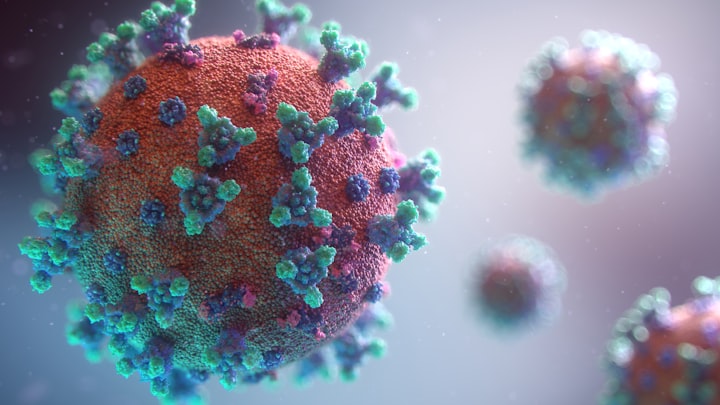
Coronavirus
Here you will find important information about the virus, how it spreads, what symptoms you should look for, and how you can protect yourself and others. The steps you should take if you believe you have COVID-19 depends on your risk of developing a serious illness. Older people and people with medical problems less than heart disease, diabetes, chronic respiratory disease or cancer are more likely to have serious illnesses.
Older adults and people of all ages with certain diseases are at higher risk of developing COVID-19. People at high risk of serious illness (CDC) If you are a high-risk person and have a fever or symptoms, call your doctor right away.
To see the latest details on COVID-19 in Iowa, visit coronavirusiowagov. Beware of colds, coughs, shortness of breath, and other symptoms. Corona's new infection, SARS-CoV-2 (SARS-Acute respiratory syndrome Coronavirus 2), is the cause of coronavirus infection 2019 (COVID-19).
The Texas State Department of Health (DSHS) is working with the Centers for Disease Control and Prevention (CDC) to respond to the new Coronavirus Disease 2019 (COVID-19) that causes outbreaks of respiratory infections. The virus that causes the spread of Covid-19 has spread to humans and more will be detected as the new coronavirus (Serious Acute Respiratory Syndrome Coronavirus 2 or SARS-CoV-2) spreads over time. Newly identified coronaviruses (SARS-CoV-2) cause a global respiratory epidemic called COVID-19.
Coronavirus is a coronavirus in the family of viruses that cause respiratory infections such as colds, severe respiratory infections (SARS), and Middle East Respiratory Syndrome (MERS). In 2019, a new Corona virus emerged as the cause of an outbreak in China. Coronaviruses belong to the same family as the cold virus and SARS-MERS.
Coronaviruses are a group of closely related RNA viruses that cause infections in mammals and birds. In humans and birds, it causes respiratory infections from mild to severe. Minor illnesses in humans include viruses caused by other viruses, especially rhinos and the deadly strains of SARS-MERS and COVID-19.
Coronaviruses can cause diarrhea in cattle and pigs, hepatitis and encephalomyelitis in mice. Colds, which make up about 15% of all cases, are caused by a coronavirus. Four of the seven known coronaviruses cause illness in humans that cause mild to moderate illness.
The third coronavirus of the novel that will appear in this century is called SARS-CoV-2. It is the cause of Coronavirus Disease 2019 (COVID-19), which occurred in China in December 2019 and was declared a global epidemic on March 11, 2020, by the World Health Organization (WHO). The mortality rate for coronavirus cases was estimated at 2% at a press conference on 29 January 2020 [16].
New Yorkers have been tested for five common causes of COVID-19. Some species are more contagious than others, and some mutations can cause serious illness. Viral recurrence is possible, but not uncommon.
When Dutch Erasmus Medical Center tracked the virus, it was renamed Human Coronavirus at ERASMUS Medical Center (HCOV-EMC). The virus does not seem to have any problems with transmission from one person to another, and most people do not transmit it.
Researchers now know that a new coronavirus is spread through airborne droplets that are released when an infected person coughs or sneezes. Breathing droplets are released when the virus coughs, sneezes, breathes, sings, speaks, or smells, and stays in a person's mouth, nose or eyes. Those who inhale these aerosols can become infected.
Unlike other viruses, the COVID-19 coronavirus, SARS-CoV-2, is not active in living cells and is proliferating. Instead, protein spikes attach to the surface of the Sars virus, allowing it to enter human cells. Once the virus enters a human cell, it reproduces its copies and infects other cells.
In the body, mRNA enters human cells and directs them to produce circular proteins in the face of the COVID-19 virus. The body recognizes these proteins as invaders and produces antibodies against them. When antibodies come in contact with the virus, they are ready to detect and eradicate the virus before it causes illness.
The rate of infection (transmission) of a transmitted virus is determined by its reproductive number (called r-noon or r-zero), which is the average number of people with whom one virus can be transmitted. During the outbreak, the birth number is 1 and then disappears. Some studies estimate RO to 36 to 40 or 224 to 358.
More than 8,000 people in 29 different countries and regions are infected and at least 774 have died. Of the 180 COVID-19 infections, all were not vaccinated, compared to only three infections in vaccinated individuals. Sixteen people who received their first dose of the vaccine two weeks ago became infected.






Comments
There are no comments for this story
Be the first to respond and start the conversation.